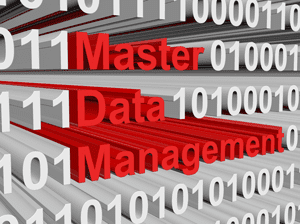According to the Data Management Body of Knowledge (DMBOK), Master Data Management (MDM) “entails control over Master Data values and identifiers that enable consistent use, across systems, of the most accurate and timely data about essential business entities.”
According to the Beginners Guide to Master Data Management (MDM):
“Underpinning MDM is the need for an effective data quality management strategy and appropriate toolset. With so many organisations dipping their toes into the choppy waters of MDM we thought it high time to provide an overview for those getting started or wanting to learn more.”
Donna Burbank of Global Data Strategy says that:
“Master Data Management (MDM) can help build this 360 degree view of key business information to allow you to take full advantage of your organization’s data for better business outcomes.”
Other Definitions of Master Data Management Include:
- “A technology-enabled discipline in which business and IT work together to ensure the uniformity, accuracy, stewardship, semantic consistency and accountability of the enterprise’s official shared master data assets.” (Gartner IT Glossary)
- “Feeding an enterprise’s bigger objectives of helping customers fulfill their centralized customer-view need for various types of applications and specific business purposes.” (Jennifer Zaino)
- “MDM is not an easy sell. As an ‘enabler,’ MDM is like the supplier or distributor of the raw materials that went into an end-product you purchased. If you’re satisfied, you think of the manufacturer who assembled it and placed their label on the product and not any of those companies who supplied and distributed its components.” (Frank Cerwin)
- “A category of software infrastructure that operationalizes the acquisition, distribution and management of core data entities, including customers, products, and suppliers.” (Forrester)
- “As more and more organizations struggle with obtaining a single, consistent view of core data such as Product, Customer, Vendor, and Location data, Master Data Management (MDM) is seeing a rise in implementation. Master Data Management is closely linked to other key initiatives..such as Data Governance and Data Quality, but is a practice in and of itself made up of diverse activities such as matching rules, golden record survivorship rules, and data migration and/or virtualization.” (Donna Burbank and Charles Roe, DATAVERSITY’s 2017 Trends in Data Architecture Report)
- “The effort made by an organization to create one single master reference source for all critical business data, leading to fewer errors and less redundancy in business processes.” (Informatica)
- “Master Data Management (MDM) provides a way to link all of that information into one big master file. If done right, this file not only provides all users with a common reference point, but it streamlines the process of sharing data among all departments and personnel.” (Jeff Shortis)
- “IT’s role in responsible managing business-critical information —master data—to reasonable quality and reliability standards.” (Joe Bugajski, MIT Information Quality Industry Symposium)
A Few Uses of Master Data Management are:
- Reconcile between diverse ways to represent similar concepts.
- Meet organizational data requirements.
- Manage Data Quality.
- Manage the costs of data integration.
- Reduce risk.
- Eliminate costly redundancies.
Photo Credit: Profit_Image /Shutterstock.com
